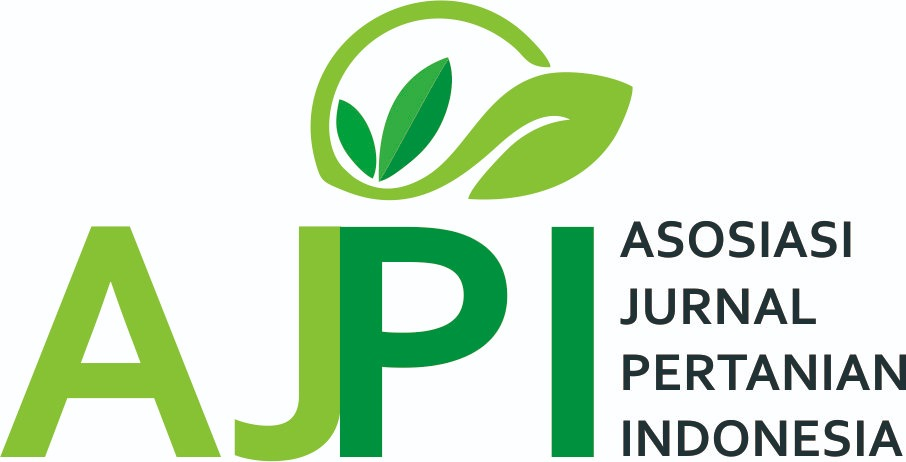EFIKASI PGPM Streptomyces sp. DAN Trichoderma sp. TERHADAP PERTUMBUHAN VEGETATIF TANAMAN TOMAT CHERRY (Lycopersicum cerasiformae Mill.)
DOI:
https://doi.org/10.33005/plumula.v9i2.107Keywords:
Pertumbuhan Vegetatif Tomat Cherry, PGPM, EfikasiAbstract
Tanaman tomat cherry (Lycopersicum cerasiformae Mill.) merupakan komoditas hortikultura yang terkenal di masyarakat dengan manfaat dan daya jual yang tinggi. Penelitian ini bertujuan untuk mengetahui efikasi PGPM Streptomyces sp. dan Trichoderma sp. terhadap pertumbuhan vegetatif tanaman tomat cherry serta untuk mengetahui efikasi PGPM terhadap pertumbuhan vegetatif tanaman tomat cherry. Tanaman tomat cherry ditanam pada polybag di lahan Fakultas Pertanian Universitas Pembangunan Nasional Veteran Jawa Timur. Penelitian ini menggunakan rancangan acak kelompok tunggal dengan 5 perlakuan yang diulang sebanyak 4 kali. Perlakuan tersebut terdiri dari P₀ : K = Kontrol (Tanpa pemberian PGPM), P₁ : S = PGPM Streptomyces sp. (1) diberikan dengan konsentrasi 20 ml., P₂ : T = PGPM (1) Trichoderma sp. diberikan dengan konsentrasi 20 ml., P₃ : ST 2:2 = PGPM (2) Streptomyces : (2) Trichoderma sp. diberikan dengan konsentrasi 20 ml., P₄ : ST 3:1 = PGPM (3) Streptomyces sp. : (1) Trichoderma sp. diberikan dengan konsentrasi 20 ml. Hasil penelitian menunjukkan PGPM dengan kosentarasi 20 mL/ 1.000 ml aquadest yang diaplikasikan ke tanaman tomat cerry belum memberikan pengaruh terhadap tinggi tanaman dan jumlah helai daun.
Downloads
Downloads
Published
How to Cite
Issue
Section
License

This work is licensed under a Creative Commons Attribution 4.0 International License.
Authors who publish with this journal agree to the following terms:
- Authors retain copyright and grant the journal right of first publication with the work simultaneously licensed under a Creative Commons Attribution License that allows others to share the work with an acknowledgement of the work's authorship and initial publication in this journal.
- Authors are able to enter into separate, additional contractual arrangements for the non-exclusive distribution of the journal's published version of the work (e.g., post it to an institutional repository or publish it in a book), with an acknowledgement of its initial publication in this journal.
- Authors are permitted and encouraged to post their work online (e.g., in institutional repositories or on their website) prior to and during the submission process, as it can lead to productive exchanges, as well as earlier and greater citation of published work (See The Effect of Open Access).











